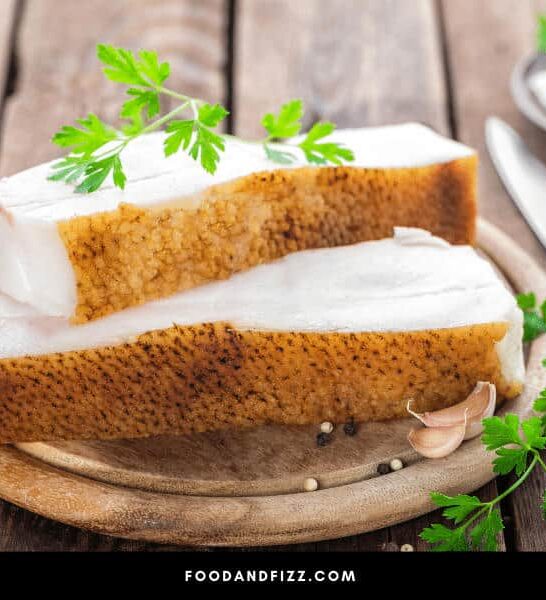At What Temperature Does Pork Fat Render? Lard is the white fatty stuff that by and large makes up pork fat. Many people across different cultures use lard as a cooking fat, and truth to tell, it’s pretty awesome stuff in pies, other kinds of pastry, and mouth-watering fry-ups.
As I expect you’ve worked out for yourself by now, if something is delicious, it must be bad for you, so is that true of lard?
Lard does contain more saturated fat (the ‘bad’ kind of fat) than olive oil, but less than ordinary butter. When considering health, lard is therefore a middle-of-the-road kind of cooking fat.
On the plus side, lard is an excellent source of vitamin D, which is typically a problematic vitamin for our bodies to extract from food. So, lard is a goodish fat, and a terrific cooking fat… but it’s stuck inside the fat-cells of pigs. How do we get at it?
We get lard by rendering pork fat. ‘Rendering’ is what we call the process we use to isolate the fatty tissue in pork. The process involves cooking pork meat slowly until its fat melts into a liquid. This article addresses the question: at what temperature does rendering pork fat occur?
At What Temperature Does Pork Fat Render?
When rendered by being cooked in an oven, pork fat renders at between 220°F and 250°F. When rendered by simmering, the alternative method to cooking in an oven, fat renders at a lower temperature of between 130°F and 150°F. There is no qualitative difference between lard resulting from either rendering method.
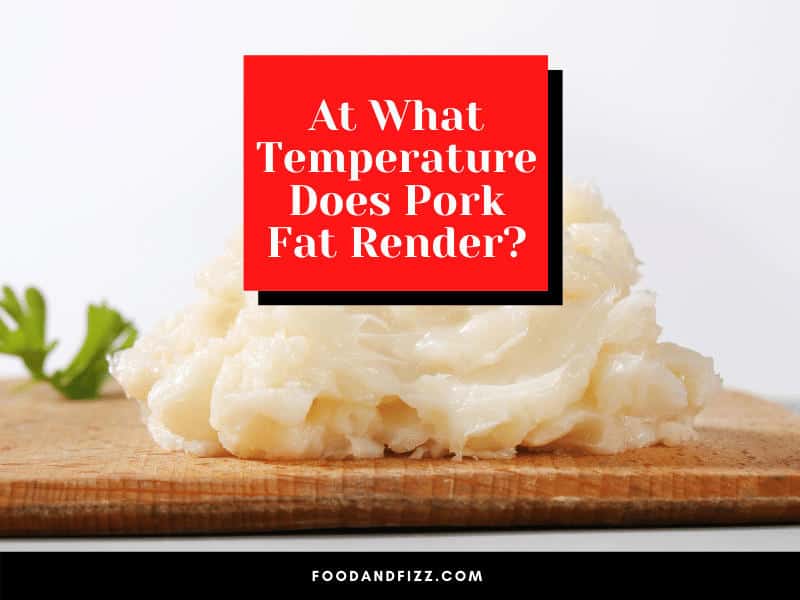
The Most Refined Lard to Render
The finest lard comes from the fatty tissue nestling against a pig’s kidneys. To distinguish lard obtained from this area against lard gathered from other places, the kidney-type lard is called ‘leaf lard’.
Anyway, regardless of the origin of the fatty tissue used in rendering fat, the fundamental process remains the same.
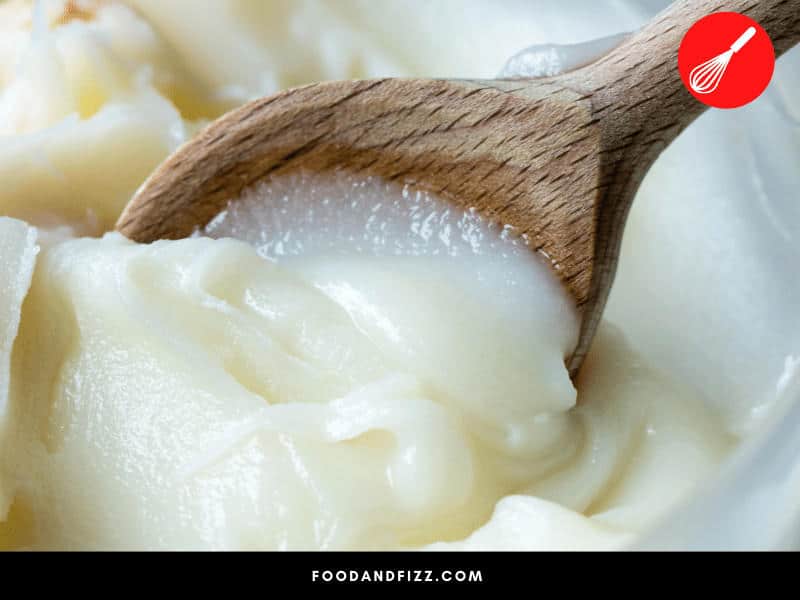
Getting Ready to Render Pork Fat
The process customarily begins with cold cuts of fatty pork, with as little meat and as much fat as possible. (Cold or frozen fatty pork is easier to cut into small pieces, and the smaller the pieces, the easier and faster they render.)
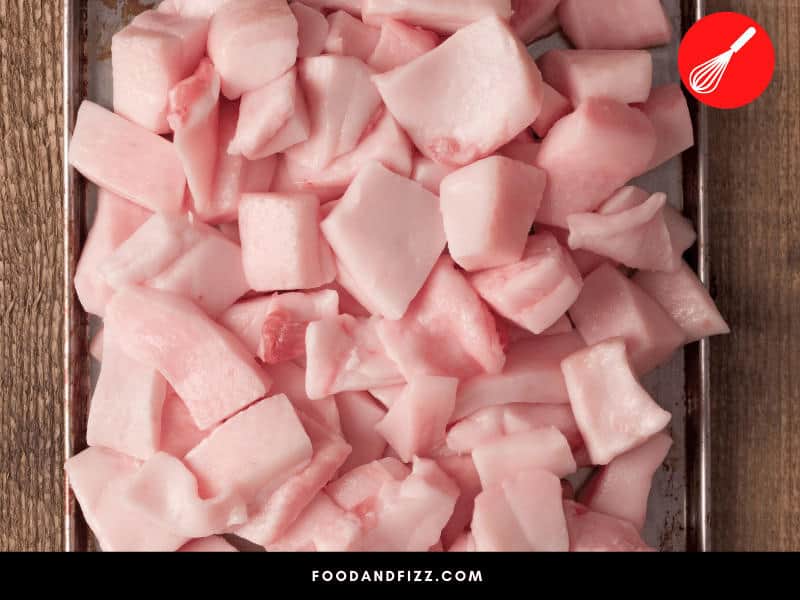
If you’re a seat-of-the-pants kind of cook, willing to make an effort on a wing and a prayer, then grind or finely chop the pork fat in a meat grinder or food processor.
Tip: If you plan to show off and make leaf lard, I suggest you stick entirely to chunks of kidney, as you wouldn’t want your precious leaf lard “defiled” by common fat.
Different Methods For Rendering Pork
Render pork by simmering fat in a pot
Put all the fatty pork into an open pot (don’t use a lid) and add enough water to the pot to cover its bottom by about a half-inch. Place the pot on a burner on medium heat, and bring the contents to the boil.
Do not use seasoning of any kind, and absolutely don’t try to get cute with this. At the end of the day, all you want is cooking fat with as little extra odor or taste as possible.
Once the pot is at a boil, lower the heat as much as possible, and settle in for the long haul. Keep the concoction simmering until the fat has liquefied and you’ve basically got your lard. This will take several hours, two or three, at a minimum.
Leaf fat will render into clean, white lard, while other fats will render into lard that is more yellowy. Water simmers at far less than boiling point (212°F), so this rendering method uses simmering temperature, around 140°F.
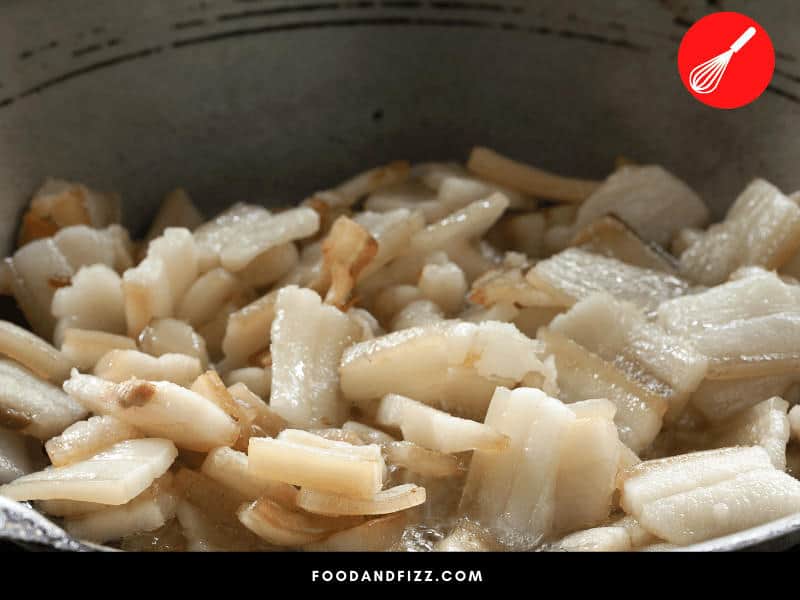
Render pork by cooking in an oven
If you have a heavy-walled pot or a Dutch oven, place the pork fat you chopped or processed in the step “Getting ready to render pork fat” above into the pot or Dutch oven.
As with the simmering method, leave the lid off to prevent steam from condensing back into water and returning to the fat because that would ruin your lard.
Set your oven somewhere between 220°F and 250°F and wait for a few hours. You will know when the lard is done because crackling produced will rise to the top. Also, the pot will make strange, wonderful sounds like gasps, sighs, and crackles. (You’ll know what I mean when you hear it. 😉)
To separate lard from the other matter in the pot, strain the mess through a colander to eliminate the large bits of crackling. Next, strain the liquid again, but this time through at least three cheesecloth layers.
This will capture all the tiny dregs and pieces of gristle, flesh, and goodness-only-knows what, allowing you to trap pure lard in any container of your choice.
Idea: Use the crackling left in the colander to prepare a scrumptious snack. Dump the crackling into a hot frying pan with the tiniest amount of lard and keep stirring until the pieces are crispy and puffed up.
Add seasoning as you see fit. I find that salt and black pepper are basically unbeatable for this purpose. My kids seem to like it best when I serve the snack doused with a little balsamic vinegar. Many cooks add this seasoned crackling to their salads for a crunchy, delicious surprise.
Afterword: What Temperature Does Pork Fat Render?
Pork fat efficiently renders into lard over a wide range of temperatures determined by the selected rendering method. Rendering pork fat requires lower temperatures by simmering than by cooking in an oven.
Simmering pork fat to render it into lard is probably a little quicker and easier than cooking the fat in an oven. Simmering is also less prone to accidental burning.
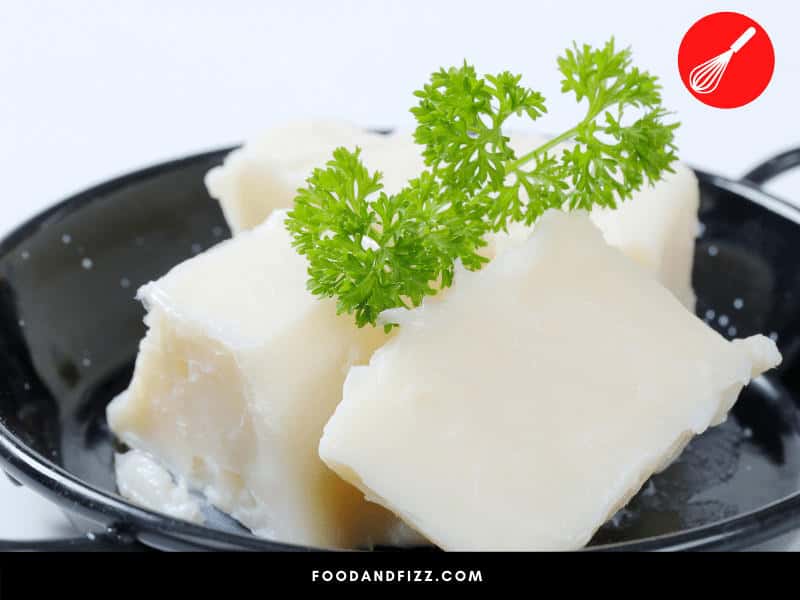
Frequently Asked Questions to At What Temperature Does Pork Fat Render?
Why is rendered ‘leaf lard’ better than other lard?
Fat from around the pig’s kidneys is the “cleanest,” meaning that it gives the purest fat without many other bits and pieces. If you experiment with making lard from different pig parts, you’ll soon notice that leaf lard is the whitest and mildest. Leaf lard’s mild odor and almost-not-there taste impose the least on the flavors of whatever you’re cooking, while at the same time, doing an excellent job as a cooking fat.
Specifically, what types of fats from a pig can I use to render it into lard?
have fat in three areas that we can render into lard: belly fat, leaf fat, and fatback. However, we don’t normally render belly fat because it has too much meat in it. I’ve already discussed leaf fat. Fatback, from the back of a pig (duh), renders into slightly yellow lard that has a strong pork odor and taste. Fatback lard will definitely add a porky smell and taste to whatever it is used to cook.
For how long can I store my home-rendered lard?
You can store homemade lard for a year at normal room temperature, or longer in a fridge. If you’re not using a refrigerator, don’t store lard in sunlight or near a stove. For much longer than a year, bung it into a freezer. However, do not thaw lard with the intention to refreeze it because that could be dangerous. You’ll know when lard has gone off because it will smell extremely funny, but not in an amusing way.

